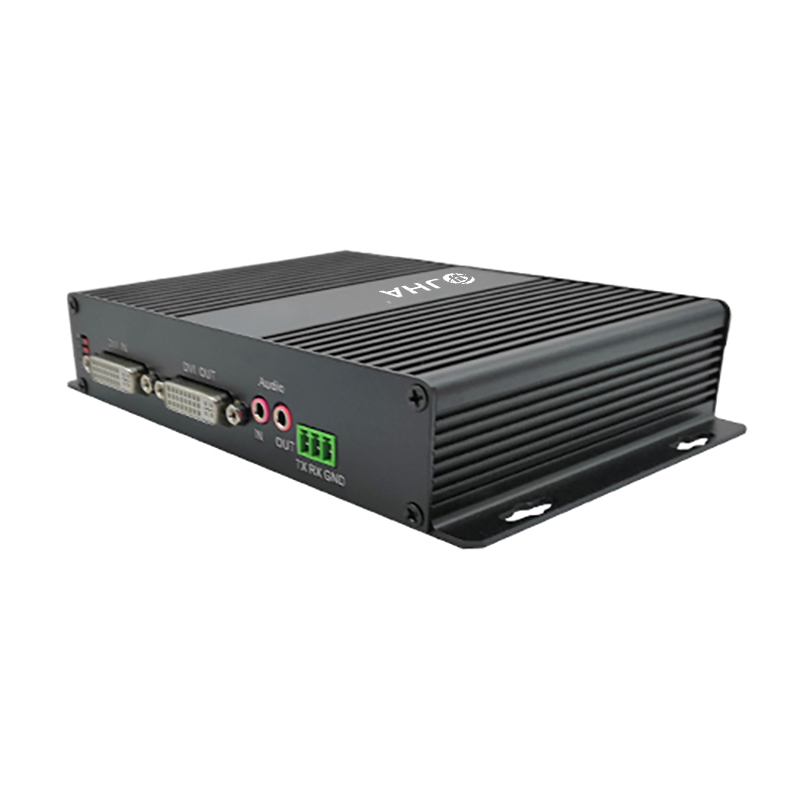DVI optical transceiver is composed of DVI transmitter (DVI-T) and DVI receiver (DVI-R), and transmits DVI, VGA, Audip, RS232 signals through a single-core single-mode optical fiber.
What is a DVI optical transceiver?
DVI optical transceiver is the terminal device for DVI optical signal transmission, which is composed of a receiving end and a transmitting end. A device that can convert 1 DVI signal into an optical signal through various codes and transmit it through optical fiber media. Since digital technology has obvious advantages in many aspects compared with traditional analog technology, just as digital technology has replaced analog technology in many fields, the digitization of optical transceivers has become the mainstream trend of optical transceivers. At present, digital image optical transceivers mainly have two technical methods: one is MPEG II image compression digital optical transceiver, and the other is non-compressed digital image optical transceiver. DVI optical transceivers are mainly used for large LED screens, multimedia information release systems, and are widely used in airports, toll station monitoring centers, shopping malls, governments, medical treatment, radio and television and other occasions.
Application of DVI optical transceiver
In multimedia application systems, it is often necessary to carry DVI digital video signals, audio and video signals, and serial data signals for long-distance transmission. However, when using ordinary cables for long-distance transmission, there will always be poor output signals, which are susceptible to interference, and the displayed images will appear blurry, smearing, and color separation.At the same time, the transmission distance is short, and multiple cables are needed to transmit these signals at the same time, which cannot meet the requirements of long-distance transmission in multimedia information publishing and other occasions. The use of DVI terminal for transmission completely solves such problems, and the transmission distance is 0-80 kilometers. At the same time, optical transceiver transmission has the advantages of low attenuation, bandwidth, strong anti-interference performance, high safety performance, small size, light weight, etc., so it has incomparable advantages in long-distance transmission and special environments. In addition, the DVI optical transceiver can transmit serial port signals at the same time for communication with the LCD, and can also be used as a long-distance transmission of the touch screen. The application of DVI optical transceiver equipment in the multimedia system not only saves construction costs and the complexity of wiring, but also can ensure the goal of high quality. It is especially suitable for various long-distance applications such as the transmission of high-definition video signals in train stations and military exercises.
Advantages of DVI optical transceiver:
1. Multiple specification options: independent, 1U rack-mount and 4U rack-mount installations are available.
2. Optoelectronic self-adaptation: advanced self-adaptive technology, no need for electro-optical adjustment when using.
3. LED status display: LED status indicator monitors key parameters.
4. Digital uncompressed: all digital, uncompressed, high-definition transmission.
5. Strong adaptability: suitable for harsh industrial environments such as extremely high temperature and extremely low temperature.
6. Easy to install: no software setting is required, plug and play function is supported, and hot plug is supported.
Post time: Dec-21-2021






